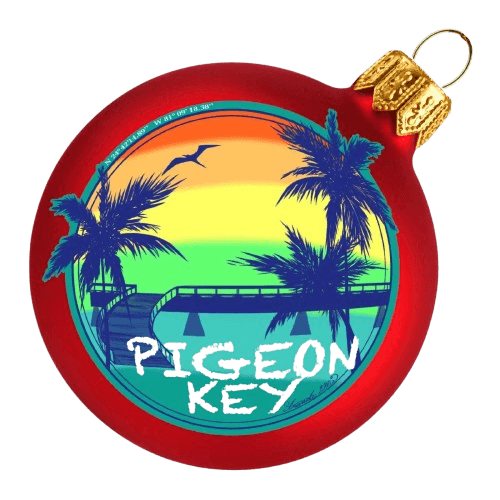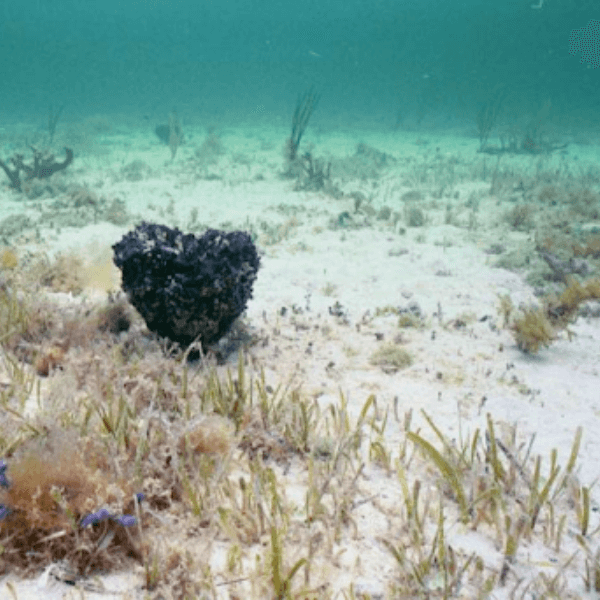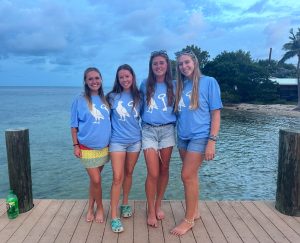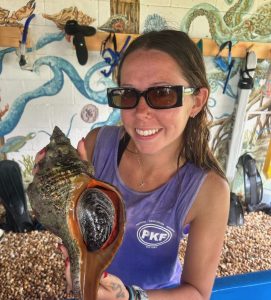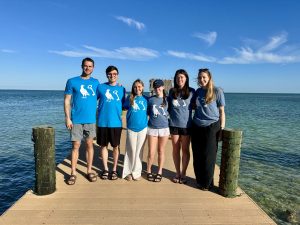The Florida Keys are home to a wide variety of habitats and marine life. One of the most fascinating, yet understudied habitats in the Florida Keys is the shallow hardbottom, making up approximately 30-40% of South Florida’s coastal waters.
The shallow hardbottom habitat was formed in the Florida Keys roughly 200,000 years ago when the Ice Age caused sea levels to drop, exposing and killing the coral reefs living in this region, leaving behind only the calcium carbonate skeleton.
Years and years of erosion have created a layer of limestone sediment known as marl over the top of the hard, rocky substrate. This looks and feels very similar to sand! Marl can also be created when certain creatures, such as parrotfish and sea cucumber, eat corals and excrete it.
Many species call the shallow hardbottom home as the substrate provides an ideal foundation for corals and sponges to grow and live, which serves as the food and shelter for many fish and invertebrates. Commercially important organisms like the Caribbean Spiny Lobster will migrate here from other habitats, such as seagrass beds, once they get large enough and use the cracks and crevices to hide.
This habitat also supports many recreationally important fish species. For instance, the tarpon, a popular and elusive sport fish, can be found in the shallow hardbottom.
Here on Pigeon Key, the shallow hardbottom surrounds our dock, which can be explored by snorkeling right off the dock or by tide pooling and flipping over rocks along the island’s edge. Both are excellent ways to find a variety of marine species! You can view this habitat and the seagrass habitat from the Old Seven Mile Bridge, so on your next visit to Pigeon Key, keep an eye out from the bridge and take advantage of the diverse habitats that the Florida Keys offer!
